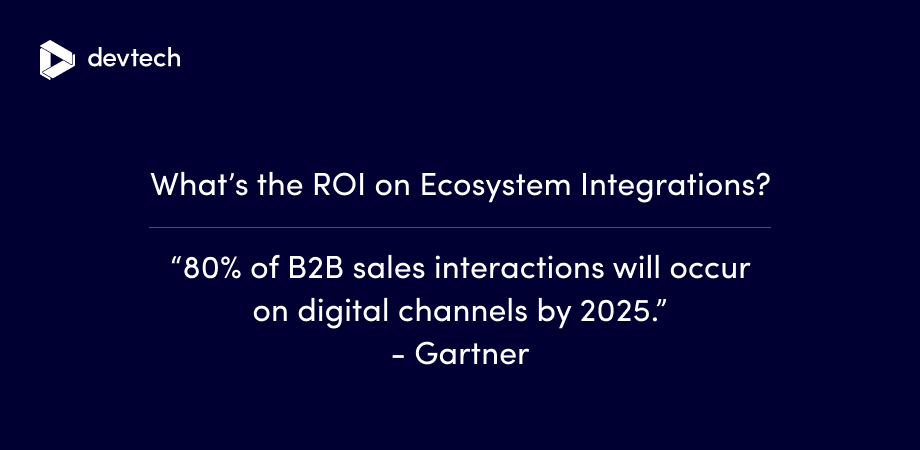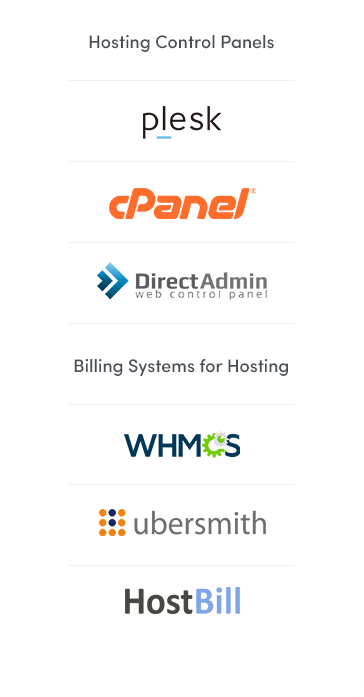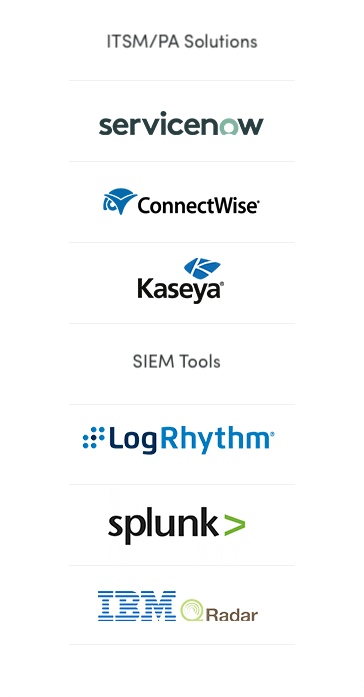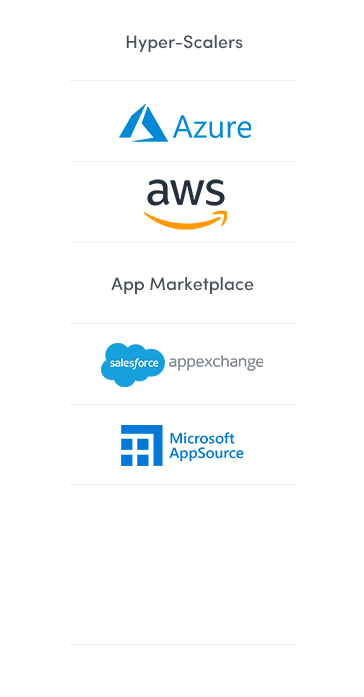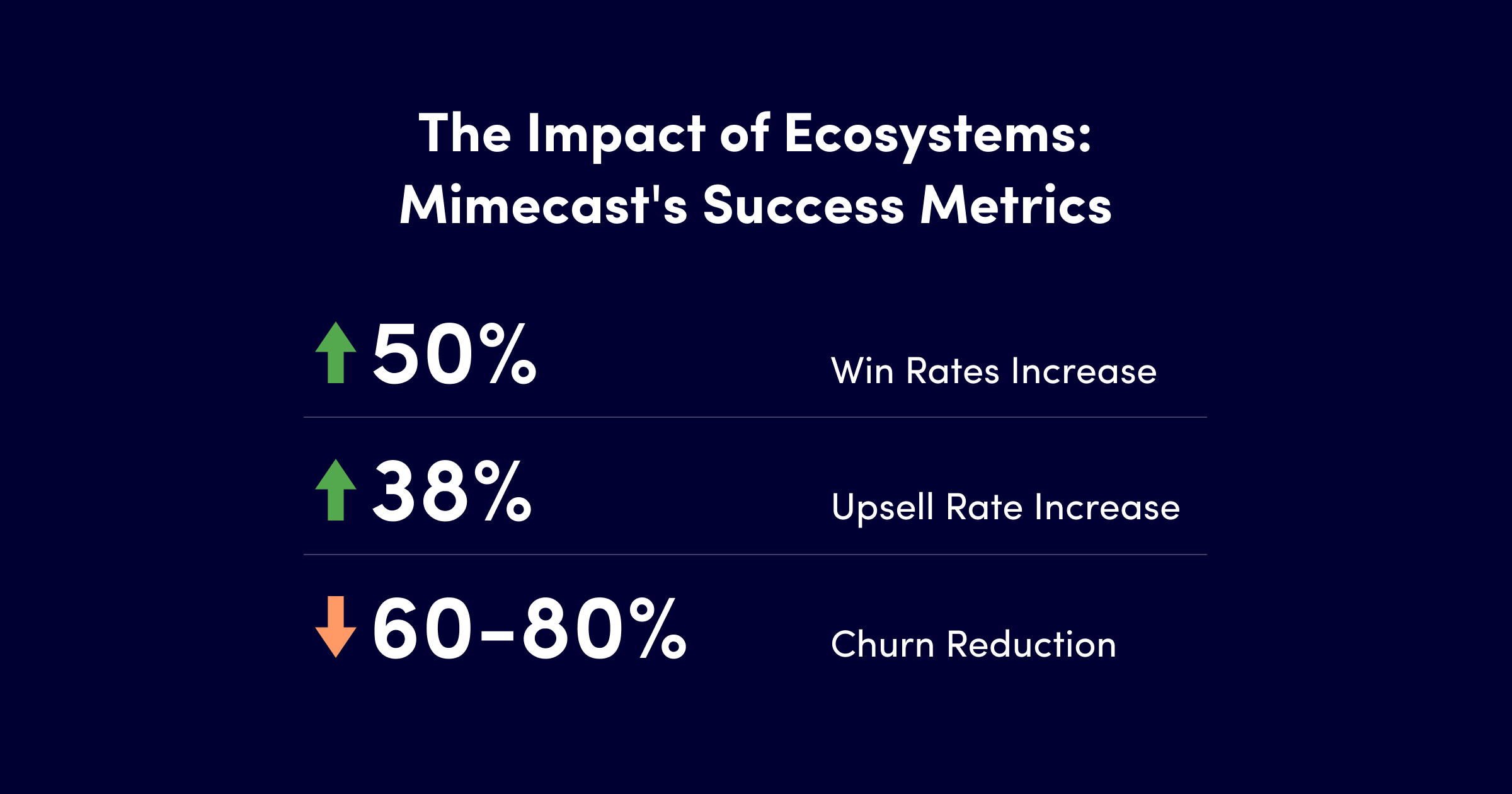In the swiftly changing digital landscape, businesses must pivot and adapt to maintain their relevance. Central to this adaptation is the role of ecosystems, which are key drivers of standout performance. According to PwC top companies are 1.6 times more likely than their peers to use ecosystems for competitive advantages, like reaching new markets, gaining unique customer insights, and accessing complementary skills.
That’s why it’s imperative to consider ecosystem integration as a key component of revenue growth strategy. Let’s delve into understanding the Return on Investment (ROI) of ecosystem integration concerning cost, time, and revenue.
1. Why Ecosystem Integration is Vital
In today’s fast-paced business environment, having a stellar product is just the starting point. The real challenge lies in ensuring its visibility and relevance across multiple channels and ecosystems. A HubSpot survey showed that 76% of business leaders believe ecosystems will be the main disruptor to current business models. By integrating into the right ecosystems, businesses can accelerate their revenue growth, enhance customer stickiness, and achieve superior lifetime customer value.
Leveraging the ecosystem edge: Top-performing companies tend to be 1.7 times quicker to market, 1.2 times more flexible and agile, and 2.3 times more inclined towards strong innovation.
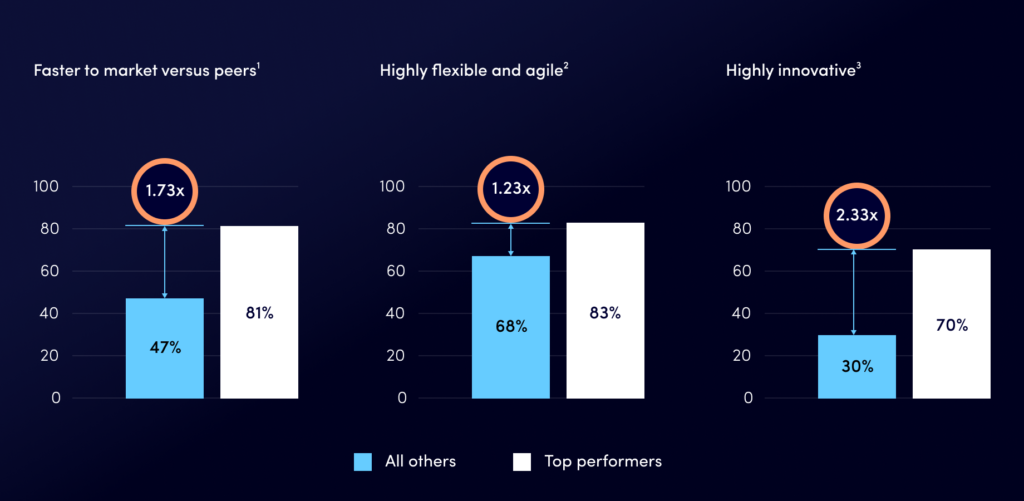
Consider Mimecast’s journey, a cybersecurity ISV specializing in cloud-based email management. They had a vision: to supercharge their ecosystem strategy, leveraging the robust partner network they’d cultivated over time. By diving deep into various ecosystems and complementary solutions, Mimecast saw an opportunity to automate service ordering via APIs, enhancing value for their end-users. But here’s the catch – while they were keenly aware of the pressing need for a laser-focused ecosystem strategy, they grappled with limited insights into third-party cloud platforms and ecosystems. Additionally, striking a balance between their core R&D roadmap and the need for go-to-market acceleration proved challenging.
Through a strategic technology partnership with Devtech, Mimecast not only navigated these challenges but also reaped impressive results. Thanks to API integrations, they celebrated a 7% surge in average order value and a whopping 75% reduction in down-sell and churn. Plus, they tapped into a dozen new ecosystems, driving revenue upward.
2. Understanding the Costs
Diversifying sales channels and venturing into multiple ecosystems might initially seem like a daunting financial leap. But, with the right strategy, these expenses transform from mere overheads to calculated investments. Remember, the game isn’t about omnipresence; it’s about marking a significant presence where your audience resides. Dive into the world of ecosystem costs: from the foundational infrastructure elements influenced by TCO (total cost of ownership) to the innovation-centric research and development expenses that can be optimally shared among partners. While the maze of integration might appear complex, enlisting third-party specialists can simplify and economize the process. Constant upkeep, though persistent, is an avenue many choose to outsource for efficiency. Marketing endeavors need a shared approach, especially as traditional methods evolve. And, an essential note: never sidestep regulatory compliance—overlooking it can quickly turn from oversight to obstacle.
3. Time: The Hidden Variable
Navigating an ecosystem strategy without a clear plan is like taking a shot in the dark hoping to hit a target. Understanding the intricacies of the ecosystems you’re aiming for is essential before immersing yourself. Skipping market research might lead to errors that could negatively impact your ROI over time.
Powered by Ecosystems: Leading businesses are about 1.3 times more inclined than their counterparts to maintain a well-defined ecosystem strategy. Furthermore, they’re approximately 2.3 times more likely to derive over 60% of their earnings from ecosystems, with ambitions to amplify this trajectory.
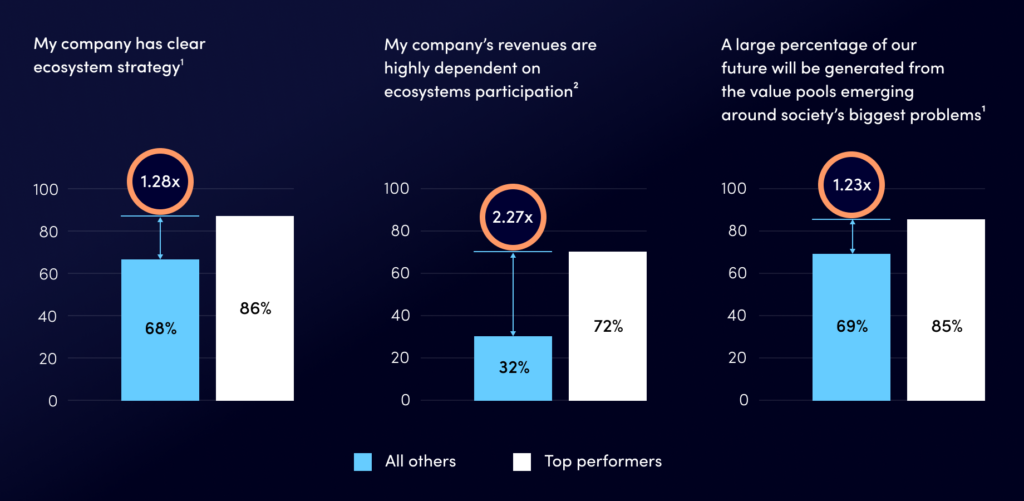
Given the complexities of the ecosystem landscape, it’s imperative to allocate sufficient time for comprehensive research before solidifying any ecosystem strategy. This proactive approach not only aids in averting potential pitfalls but also ensures a smoother integration into new ecosystems.
Time-to-market is crucial. While diving into new ecosystems, one might feel overwhelmed by the perceived time consumption. But think of the time saved when tapping into ready-made audiences. Prioritize ecosystems based on your product’s compatibility and potential for growth.
4. Revenue Potential: The Ultimate Goal
With integration comes the promise of increased revenue, and the data doesn’t lie. The best companies are 2.3. times more likely to earn over 60% of their income from ecosystems, and they’re gearing up to amplify this number.
Jay McBain, a top analyst at Canalys, has said that we’re entering the “Ecosystem Era”. The market is shifting, and we need to change how we work quickly. Nowadays, with tech company values dropping and company boards looking to cut costs, there’s a bigger push for partnerships to bring in money. This is why teams need to show clearly how they’re making a difference.
Take, for example, the Japanese construction company Komatsu. They’ve masterminded an ecosystem that brings construction sites into the digital age using open platforms, apps, and IoT gadgets. This connects clients with various service and software solution providers. Through this, Komatsu has revolutionized how they deliver value to their clientele.
Partnerships play a pivotal role in boosting a company’s bottom line. In fact, the income generated through these alliances often forms a significant chunk of a company’s total earnings. What’s more, this kind of income is cost-effective, meaning it often requires less investment in terms of time, effort, and resources. Recognizing this, revenue optimization experts are now focusing more on enhancing partnership operations. Their aim? To streamline the process and make revenue from partnerships even more impactful and efficient.
Conclusion: The Integrated Future
Projected estimations show that numerous sectors are evolving into expansive ecosystems, aiming to fuel a $60 trillion economy by 2025.
Admittedly, this shift poses challenges for leadership teams accustomed to traditional competitive boundaries. Yet, swift adaptation is crucial. As ecosystems increasingly define superior performance, companies with a head start are positioned for further success. To capitalize on this, businesses must refine their ecosystem strategy, hone essential skills, and scout opportunities with a visionary perspective – before someone else seizes the chance.
As we navigate the ever-evolving digital landscape, one thing is clear: isolated systems are a relic of the past. The future belongs to integrated, interconnected platforms that offer seamless user experiences and drive collaborative growth.
Need Help?
Expand your reach, win more customers, and drive growth through our tailored Ecosystem Enablement solutions.
